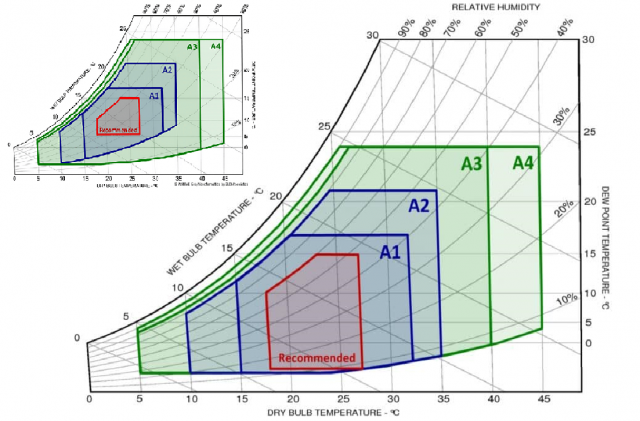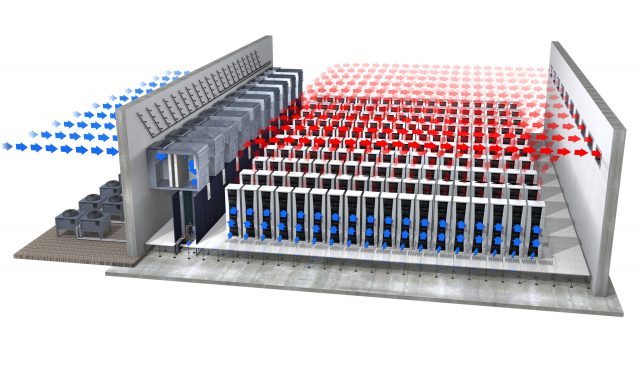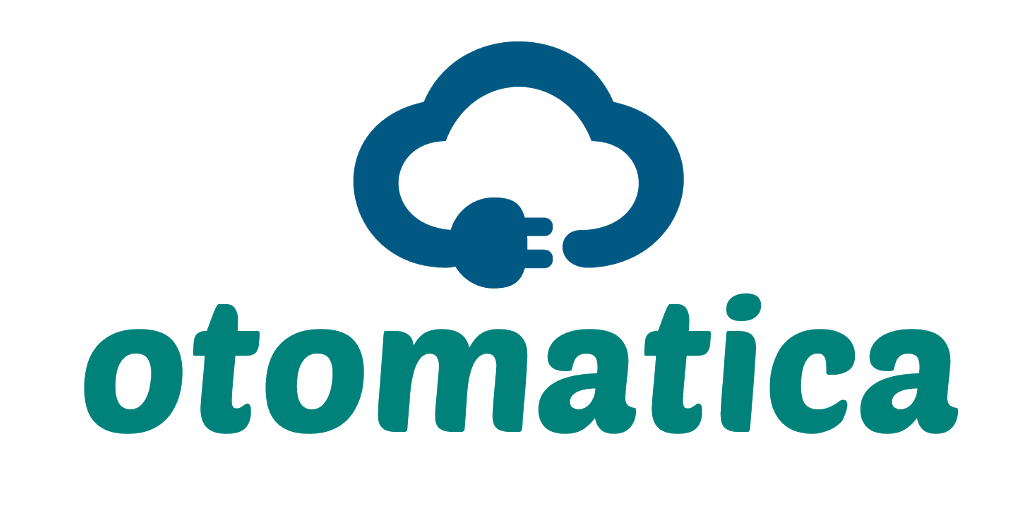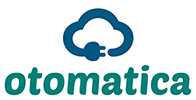ASHRAE operates under a separate unit on Data Centers as the US Society of Mechanical Engineering (ASHRAE TC 9.9). This unit sets out the environmental standards that guarantee the expected business continuity by working with IT device manufacturers as well as companies that research, supply, and produce cooling systems used in data centers.
The environment criteria published by ASHRAE in 2011 were described in the blog post titled “How Are Data Center Environment (Temperature) Criteria Determined?”. Technical standards are usually made to comply with the current technology and conditions with 5-year updates. Certain environment criteria changes were announced earlier in 2015.

ASHRAE shared the latest version of the updated criteria table for Information Technology hardware in the technical article “Power Equipment Thermal Guidelines” published in 2016. Although the temperature criteria published in 2011 also applied in 2016, the most remarkable change was related to the humidity level of the air absorbed by the IT hardware located in white space.
IT hardware have continuous internal air flow to release the heat of power consuming modules into the environment. The humidity level of the cooled air absorbed into the hardware is critical for the product life. ASHRAE set both lower and upper limits for humidity as criteria. The lower limit is to avoid the damaging effects of electrostatic discharges that have an increasing probability with high airflow through the hardware. On the other hand, the upper limit is to prevent small particles moving in high airflow from sticking onto the module card under high humidity rate and creating unwanted electrical connections over time. Both facts directly impact lifecycle.
Examining the 2016 environment criteria expansion in comparison with the psychrometric curves in Figure-1, a significant decrease is observed in the lower humidity limit. As a new criterion, the lower humidity level of the “recommended” window that the IT hardware is required to meet continuously, was reduced down to 8%-10% relative humidity level. It was stated that the lower relative humidity level which was 40% in the whole temperature range in 2004 could be reduced down to around 30% in the high air temperature of 27 °C in 2008. Although ASHRAE later reduced this lower limit further in 2011, the most significant drop was recommended in the 2015-16 update.
Passing time gave enough development period for server manufacturers to apply these criteria into their new-generation production. If you check the thermal criteria in the technical specifications of the servers’ brands and models you use frequently you will see that all the new generations are compliant. In fact, you are not still late to classify your hardware according to this difference in the humidity range by opening another column in your IT inventory. You will thus be able to take numerous opportunities in terms of efficiency.
Which cooling method has ASHRAE 2016 version privileged?

Most critical cooling methods in white spaces operate based on the closed air cycle principle. In other words, the indoor units perform the cooling function without having atmospheric air mix with the room air. Heat discharge from the indoor air to the atmosphere is achieved through converters without any loss of humidity. A humidification or dehumidification process is required to significantly change the rate of humidity trapped in a closed cycle.
The principle of direct air cooling is a method with examples throughout the world and in our country. In this principle, if the air temperature, humidity, and pollution criteria are met, the air delivered from the atmosphere directly passes through the IT hardware, takes on the heat and is discharged back to the atmosphere through controlled dampers. (Figure-2) If the outdoor air is below the temperature criteria, the air control mechanism of the indoor unit mixes the outdoor air with the indoor air in a suitable way and brings it to the required value. If the outdoor air temperature is above the upper limit, cooling is switched to conventional closed cycle and no air is delivered from outdoors.
The humidity criterion is important in using outdoor air also in white space. If the outdoor temperature is below the limits, the temperature can be adjusted by air mixing method. On the other hand, using outdoor air by conditioning its humidity both complicates the system and increases investment and operating costs. This new ASHRAE update offers major advantages for data centers using the principle of direct air cooling.

For example, Figure-3 shows the mean dry air temperature and dew point temperatures in Ankara for October, November, and December 2019. Mean temperature drops from +18 °C to minus degrees. Ideal free cooling conditions were present during these months. On the other hand, examining in reference to the 2011 (5.5 °C DP) and 2016 (-9 °C DP) criteria for maximum, mean and minimum dev point temperature curves, it can be observed that the 2016 (-9 °C DP) criteria change offers a great advantage for places using direct air cooling. In the case of the 2011 (5.5 °C DP) criteria, atmosphere condensation temperatures enable free cooling at certain times (certain days in October), whereas with the 2016 (-9 °C DP) criteria it is obvious that free cooling can be used for three months except for a few days.
This cooling technology is used in the largest data centers of the world. For example, the implementation of direct cooling using advanced techniques is explained quite well in the Facebook Data Center video. As the facility building is adapted to direct air cooling in this implementation without any need for indoor units, it is observed that areas involving humidification and dehumidification functions take up considerable space. It will achieve high economic operation potential if the IT hardware items it collocates meet the 2016 ASHRAE criteria. The implementations in Turkey will also have high operational advantages in the light of these new criteria.


